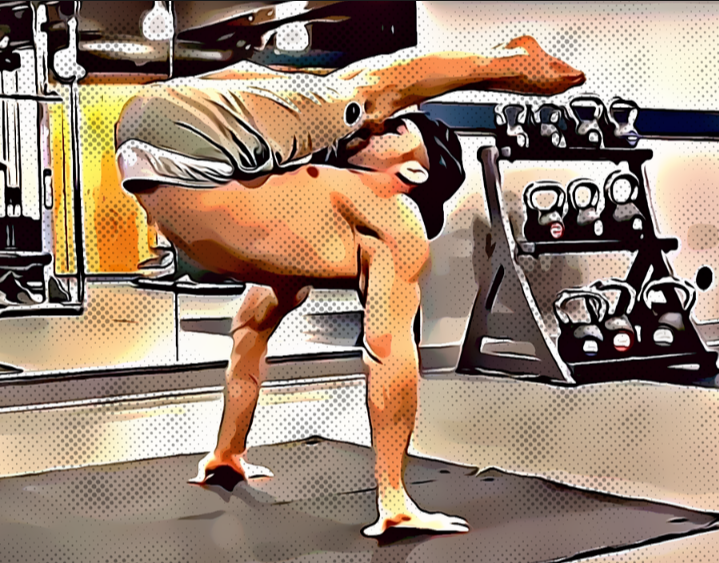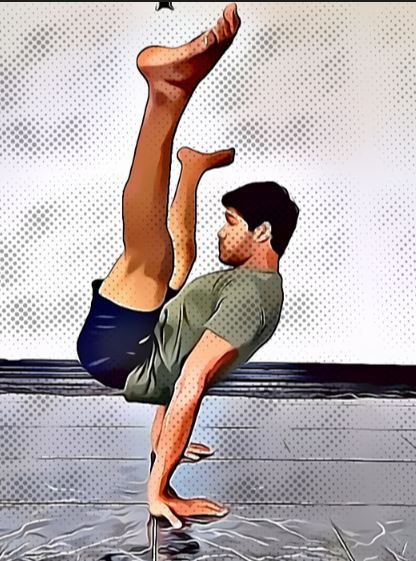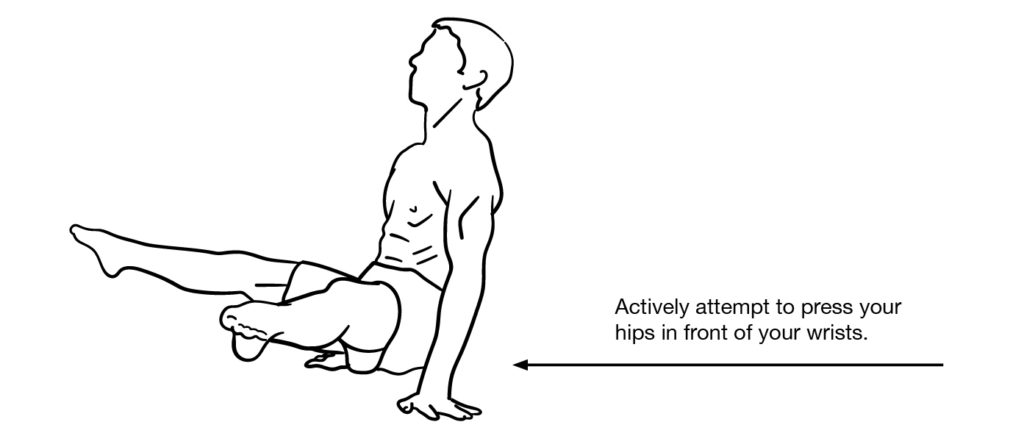In the Gymnastics Curriculum, the manna progression training is one of the seven basic exercises that athletes will work towards in the Groundwork Series. There is a whole range of profits that come along with spending time on the progressions and mobility drills that build-up to this challenging movement.

Further, the manna is an indispensable section to balance out advanced ring strength. Here I will discuss the manna progression training itself, how to train for it, and the positive adaptations it yields to those brave enough to commit themselves to working on it.
Static strong point elements in the body in ways that cannot be constructed with pilates and other forms of exercises. The strength developed mostly applicable in a wide range of athletic endeavors. One of the sublime static strength element exercises is the manna. Now I am well conscious that young students catch the manna progression training to be too interesting.

It’s true, the manna, when performed properly, looks almost impossible: the ability to perform an L-Sit, hands behind you, legs off the floor, and the impressive magic that happens when the body compresses in on itself, supported only by the arms.
Table of Contents
Manna is NOT a Leg Lift
Note that the manna is not simply a V-Sit where that athlete attempts to rise higher into the position. Proper progressions rather focus on extending the hips forward. Overlooking this important point is a common mistake that prevents further progress in otherwise hard-working athletes.

It entails too much energy and a long term promise to attain. However, for those few who persevere, in the end, the manna provides an impressive overall return on the effort invested; developing a high degree of both static strength and active flexibility simultaneously, as well as substantial core strength.
The Progressions for Developing a Manna:
1) Elevated bent leg middle split hold –

Initially, most people will find that they lack the hip strength necessary to lift their legs off of the ground with straight legs. This limitation can be sidestepped by performing a middle split hold up on a bench or chair etc and allowing their legs to bend as necessary. Over time, as your strength and flexibility improve gradually straighten the legs.
2) Low straight leg middle split hold –

Perform elevated as with the variation above, but now focus on achieving completely straight legs. At first, your legs may be below parallel, perhaps even far below it. This is fine. Simply be patient and give your hips time to strengthen and your active flexibility to develop.
3) Leg Lift and Middle Split Hold –
This is a fundamental exercise for the Manna strength training. This will help build up strength in the compression for the Manna and will improve hip and core.

You can do 3 different variations –
a. Half leg lifts, these are the beginner version of the leg lifts.
b. Regular hanging leg lifts, these are a full combination of Yoga and exercise and will be a great compression/core exercise.
c. Last variation is the L to V leg lifts and core strength for the L to V part of the Manna strength training.
Focus on keeping straight legs, pointed toes and compress the body as much as you can.
Many Fitness books especially sportsbooks will suggest for the leg lifts work from 5-10 reps and 3-5 sets. Adding weight on the leg lifts can be helpful to increase difficulty once they are mastered.
Initially, the primary movement which you will use to build a manna strength training is the middle split hold. Begin from a seated straddle on the floor with the legs as far apart as comfortable.
Place your hands on the ground directly behind your legs and next to the glutes. Here comes the hardest and initially the most challenging part of this exercise, attempt to simultaneously lift your feet and glutes off of the floor.
Please note, it is incorrect to allow either the feet or the glutes to lift off of the floor first, they must rise together. The legs should also remain horizontal to the floor; neither the feet nor the glutes should be higher than the other.

Once you have developed the hips strength necessary to lift the legs correctly, it is time to begin pressing the hips forward. You have probably of necessity been leaning backward and allowing your glutes to rest upon your hands, this must now cease.
From this point on, you will always strive to press the hips forward off of the hands. Understand that not only physical your mental strength also matters a lot with improving stamina.
At first, only a very slight movement of the hips forward will require tremendous effort. This is quite normal. It should be noted that during this forward pressing motion, the legs must continue to be parallel to the ground, with neither the feet nor the glutes higher than the other. Also during the press forward, the chest and back must remain straight and flat at all times.
4) Elevated middle split hold –

They are not specific manna drills. So this is going to be a beginner version, there are more advanced exercises you can do. But focus on a few easier progressions. So if you guys want to learn the manna, and don’t know what exercises to do then these exercises are gonna be great for you and will be a great way to get started.
With your manna training get started with the top 3 beginner exercises for the Manna strength training we have the Middle split hold. This is the starting position of the Manna and mastering this position is essential to prepare and learn the skill properly. This will build up strength in the rear deltoids (shoulder retraction), triceps, and the hips.

To do this exercise
1. We start with the hands backward, lock the arms, split the legs as wide as we can.
2. Retract the shoulders and lean back and push with the triceps until you lift from
the ground.
3. Hold this position, and keep the legs straight and focus on retracting the shoulders.
This will be one of the first specific manna exercises you should work on!!
Lifting to the Manna can be one of the most difficult things about the skill, so it’s necessary to work on the lifting phase, which many Yoga teachers or trainers proceed with.
For this exercise you can work with 10-30s holds for 3-5 sets.
Once you are strong enough to press the hips forward several inches off of the hands while maintaining the legs parallel to the ground, it is time to begin working on elevation. From the extended forward position, press forward harder while now allowing your feet to pull back toward the shoulders.
Elevated middle split holds are where you will spend the vast majority of your manna calisthenics strength progression development time. Of special note here is that you should not allow your legs to come together until you have reached a horizontal inverted position.
5) Shoulder Extension Mobility

The last exercise will help develop shoulder extension mobility and work on the shoulder retraction for the Manna. You must retract the shoulders during the manna. To use the rear deltoids to push us into the right position. The manna slides will help develop your shoulder extension.
You want to do the exercise on a slippery wall or use a slippery object like a furniture mover or a frisbee. Start with the hands backward, hands as close together as possible.
The further away you are from the wall the easier it will be.
Since it gives you more space to move through the range of motion, you want to push the feet as high up on the wall as you can, try to get the hips to shoulder level. Focus on maintaining retracted shoulders during the whole skill. You can do 5-10 reps for 3-5 sets on this as well.
In all likelihood, you will have now spent a minimum of six months and probably a year or more building the strength, flexibility, and balance necessary to perform this skill. Continue to focus on and emphasize the fact that during the elevation the higher you would like to lift your legs, the farther forward you must attempt to press the hips.
Benefits of Training the Manna
As you can imagine, training towards the manna calisthenics strength progression involves many different components, but fortunately, that also means it prepares the body in several varied ways.
First, there is a ton of scapular retraction strength required to take the L-sit back and up through a V-sit and into a manna.
This greatly increases the load on your triceps to keep your elbows extended, and it also strengthens your entire upper back to lift your hips above your torso.
This focus on retracting your shoulder blades will help improve your posture and combat the hours of desk patrol most adults put in at work every day.
Focus on proper breadth and mind activity also. Whenever your body exhausts your mind must be very active. Throughout the practice, many of the student has less mental focus. So it’s equally necessary for your mental fitness also.
The Most Common Mistakes
The most common mistake that people make in their quest for a manna is equating it with a simple leg lift.
Visually a manna appears to be an inverted L-sit. It seems to require only a simple progression; L-sit to V-sit to manna.
In reality, the manna contains far more of a “press the hips forward” motion than it does a leg lift.
Those who insist on training a manna as though it were merely a variation of a leg lift will always have their progress stall and go no further than a V-sit.
Bonus
1. While working the manna, especially in the beginning, you will develop some spectacular cramps; particularly in the triceps and hip flexors.
2. When these occur, and they will with a sudden and ferocious intensity that will take your breath away, feel free to roll around on the ground, mouth deprecations to the gymnastic gods, massage, and/or stretch, whatever you need to do to relieve the cramp.
3. Now it should be noted that only the massaging and stretching will provide immediate physical relief; the rolling around and deprecations etc., which are an important part of gymnastics tradition.
